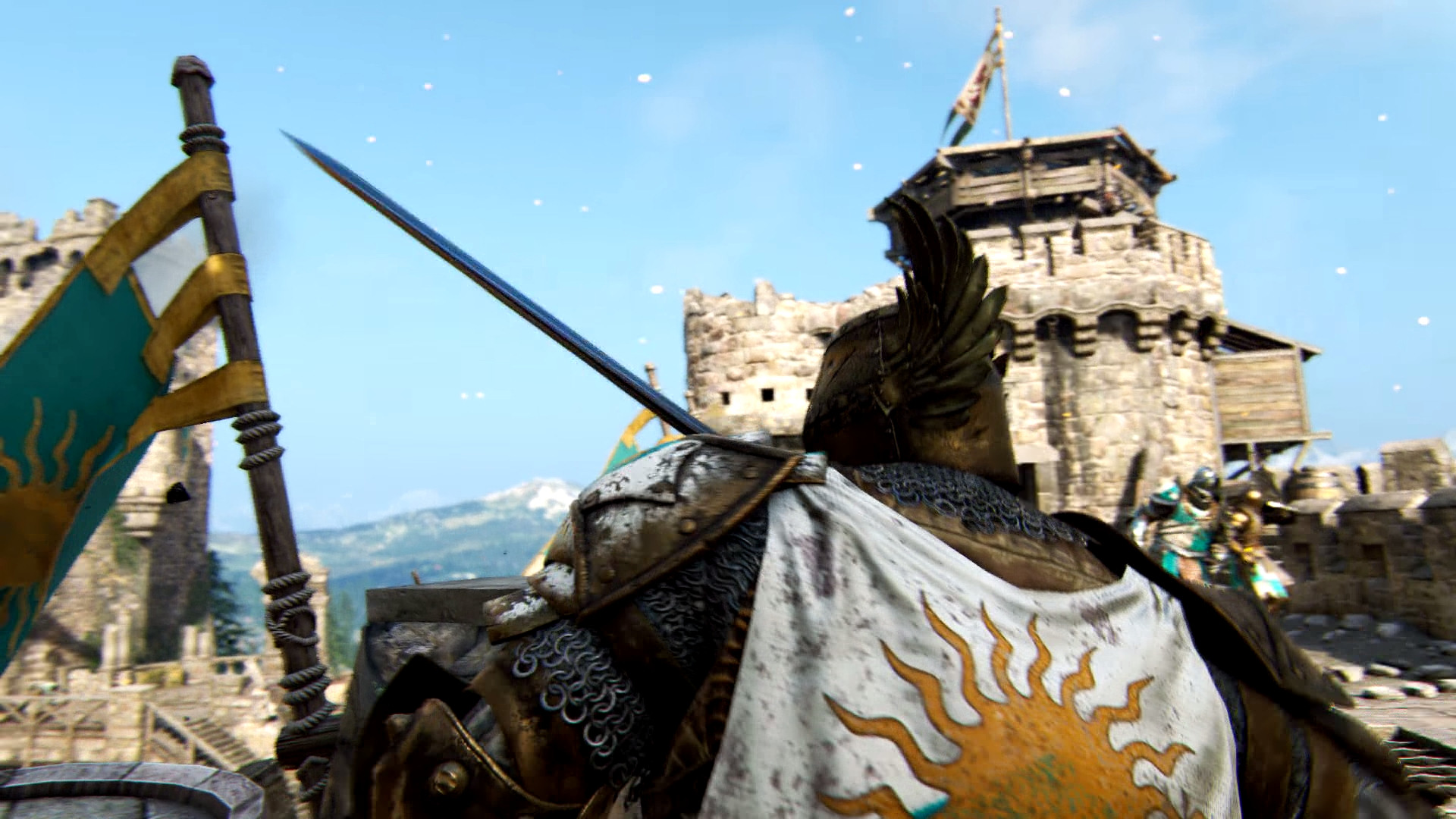For Honor Performance Review
How We Test For Honor
Test Configuration
| CPU | Core i5-6500 |
|---|---|
| Motherboard (LGA 1151) | Asus Z170-Deluxe |
| RAM | Klevv DDR4-2133 8GB |
| System SSD | MX500 SSD |
| Controller | Intel PCH Z170 SATA 6 Gb/s |
| Power Supply | Cooler Master G450M |
| Case | Haf XB EVO |
| OS | |
| Operating System | Windows 10 x64 Enterprise 1607 (14393.693) |
| Drivers | Nvidia GeForce Game Ready 378.66 AMD Radeon Crimson Edition 17.2.1 |
We're using a fairly mid-range gaming PC that we hope represents what a lot of our readers are running. If you're lucky enough to own faster hardware, you'll naturally enjoy higher frame rates. Steam's survey of hardware and software configurations offers us a view of the most prevalent components and settings (the data comes from January 2017):
- Windows 10 64-bit, representing 48.5 % of the market.
- 8GB RAM, present in 34% of surveyed gaming PCs (our configuration has 16GB).
- Full HD (1920x1080 pixels) is used by 39% of gamers, while 25 % are still at 1366x768. QHD (2560x1440 pixels) is used by less than 2% of gamers, and 4K is still anecdotal.
- Quad-core CPUs are installed in almost half of the examined systems (47% more precisely). Logically, our configuration is loaded with a mid-range quad-core Intel CPU.
Graphics Card Choices
We picked six graphics cards to test. They're mostly mid-range, and they represent popular choices from the current and previous generation of architectures. Here are the competing cards:
The Radeon RX 480 “Core” from XFX is at a disadvantage, given its stock clock rate, compared to the Asus Strix OC and its GPU frequency of 1645 MHz. We're overclocking it +4% to the level of a factory-tuned model, yielding a 1340 MHz GPU and 2 GHz memory.
These two cards represent where the mid-range segment starts. The Radeon RX 470 should have an advantage with its additional gigabyte of memory. Though, in light of For Honor's forgiving requirements, the extra capacity may not make a difference at 1920x1080.
Nvidia's GeForce GTX 970 and AMD's Radeon R9 390 are previous-gen cards, but they'll no doubt remain popular in mid-range gaming PCs for months to come.
Test Procedure
All performance data is collected using the PresentMon tool and our own custom front-end.
In order to represent graphics card performance accurately, each test subject is warmed up to a stable temperature before measurements are collected. Most GPUs employ mechanisms to optimize clock rates based on variables like power and temperature. So, tests run during the warm-up period would convey better performance than you'd see in the real world.
Get Tom's Hardware's best news and in-depth reviews, straight to your inbox.
We therefore run the benchmark sequence twice to warm up each card. Then we gather the data for our charts. For graphics options, we're testing at 1080p, 1440p, and 4K using the High and Extreme quality presets.
MORE: Best Gaming Laptops
MORE: Best Gaming Monitors
Current page: How We Test For Honor
Prev Page The Game, Graphics Engine, and Settings Next Page Benchmarks: Frame Rate, Frame Time, and Smoothness-
Sakkura While it is nice to see how last-gen cards like the 970 and 390 compare to current-gen cards, I think it would have been nice to see cards outside this performance category tested. How do the RX 460 and GTX 1050 do at 1080p High, for example.Reply -
coolitic I find it incredibly stupid that Toms doesn't make the obvious point that TAA is the reason why it looks blurry for Nvidia.Reply -
alextheblue Reply
They had it enabled on both cards. Are you telling me Nvidia's TAA implementation is inferior? I'd believe you if you told me that, but you have to use your words.19351221 said:I find it incredibly stupid that Toms doesn't make the obvious point that TAA is the reason why it looks blurry for Nvidia. -
irish_adam Reply19351221 said:I find it incredibly stupid that Toms doesn't make the obvious point that TAA is the reason why it looks blurry for Nvidia.
as has been stated setting were the same for both cards, maybe Nvidia sacrificing detail for the higher FPS score? I also found it interesting that Nvidia used more system resources than AMD. I was confused why the 3GB version of the 1060 did so poorly considering the lack vram usage but after looking it up nvidia gimped the card, seems a bit misleading for them to both be called the 1060, if you didnt look it up you would assume they are the same graphics chip with just differing amounts of ram. -
anthony8989 ^ yeah it's a pretty shifty move . Probably marketing related. The 1060 3 GB and 6 GB have a similar relationship to the GTX 660 and 660 TI from a few gens back. Only they were nice enough to differentiate the two with the TI moniker. Not so much this time.Reply -
Martell1977 Reply19352376 said:I was confused why the 3GB version of the 1060 did so poorly considering the lack vram usage but after looking it up nvidia gimped the card, seems a bit misleading for them to both be called the 1060, if you didnt look it up you would assume they are the same graphics chip with just differing amounts of ram.
I've been calling this a dirty trick since release and is part of the reason I recommend people get the 480 4gb instead. Just a shady move on nVidia's part, but they are known for such things.
Odd thing though, the 1060 3gb in laptops doesn't have a cut down chip, it has all its cores enabled and is just running lower clocks and VRAM.
